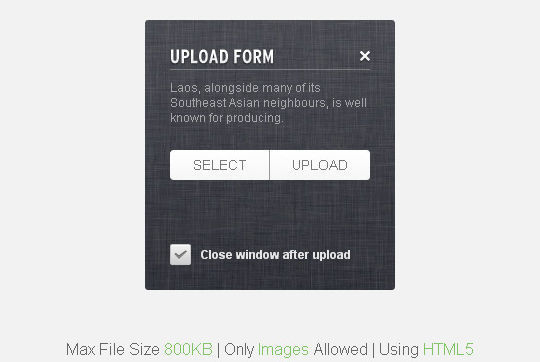1. Print Page Option
Providing option to print a page is a common task for web developers. Following is the available code:
 Collapse | Copy Code
Collapse | Copy Code
<!---->
$('a.printPage').click(function(){
window.print();
return false;
});
<!---->
<div>
<a class="printPage" href="#">Print</a>
</div>
2. Helping Input Field/Swap Input Field
In order to make an Input Text field helpful, we normally display some default text inside it (For Example "Company Name") and when user click on it, text disappears and user can enter the value for it. You can try it yourself by using the following code snippet.
 Collapse | Copy Code
Collapse | Copy Code
<!---->
$('input[type=text]').focus(function(){
var $this = $(this);
var title = $this.attr('title');
if($this.val() == title)
{
$this.val('');
}
}).blur(function() {
var $this = $(this);
var title = $this.attr('title');
if($this.val() == '')
{
$this.val(title);
}
});
<!---->
<div>
<input type="text"
name="searchCompanyName"
value="Company Name"
title="Company Name" />
</div>
3. Select/Deselect All options
Selecting or Deselecting all available checkbox options using a link on HTML page is common task.
 Collapse | Copy Code
Collapse | Copy Code
<!---->
$('.SelectAll').live('click', function(){
$(this).closest('.divAll').find('input[type=checkbox]').attr('checked', true);
return false; });
$('.DeselectAll').live('click', function(){
$(this).closest('.divAll').find('input[type=checkbox]').attr('checked', false);
return false; });
<!---->
<div class="divAll"> <a href="#" class="SelectAll">Select All</a>
<a href="#" class="DeselectAll">Deselect All</a> <br /> \
<input type="checkbox" id="Lahore" /><label for="Lahore">Lahore</label>
<input type="checkbox" id="Karachi" /><label for="Karachi">Karachi</label>
<input type="checkbox" id="Islamabad" /><label for="Islamabad">Islamabad</label> </div>
4. Disabling Right Click
For web developers, its common to disable right click on certain pages so following code will do the job.
 Collapse | Copy Code
Collapse | Copy Code
<!---->
$(document).bind("contextmenu",function(e){
e.preventDefault();
});
5. Identify which key is pressed.
Sometimes, we need to validate the input value on a textbox. For example, for "First Name" we might need to avoid numeric values. So, we need to identify which key is pressed and then perform the action accordingly.
 Collapse | Copy Code
Collapse | Copy Code
<!---->
$('#txtFirstName').keypress(function(event){
alert(event.keyCode);
});
<!---->
<asp:TextBox ID="txtFirstName" runat="server"></asp:TextBox>
6. Validating an email.
Validating an email address is very common task on HTML form.
 Collapse | Copy Code
Collapse | Copy Code
<!---->
$('#txtEmail').blur(function(e) {
var sEmail = $('#txtEmail').val();
if ($.trim(sEmail).length == 0) {
alert('Please enter valid email address');
e.preventDefault();
}
var filter = /^([\w-\.]+)@((\[[0-9]{1,3}\.[0-9]{1,3}\.[0-9]{1,3}\.)|(([\w-]+\.)+))([a-zA-Z]
{2,4}|[0-9]{1,3})(\]?)$/;
if (filter.test(sEmail)) {
alert('Valid Email');
}
else {
alert('Invalid Email');
e.preventDefault();
}
});
<!---->
<asp:TextBox id="txtEmail" runat="server" />
7. Limiting MaxLength for TextArea
Lastly, it usual to put a textarea on a form and validate maximum number of characters on it.
 Collapse | Copy Code
Collapse | Copy Code
<!---->
var MaxLength = 500;
$('#txtDescription').keypress(function(e)
{
if ($(this).val().length >= MaxLength) {
e.preventDefault();}
});
<!---->
<asp:TextBox ID="txtDescription" runat="server"
TextMode="MultiLine" Columns="50" Rows="5"></asp:TextBox>
This is my selection of jQuery code snippets but jQuery is a very powerful client-side framework and a lot more can be done using it.
By
Imran Abdul Ghani,
4 Sep 2013 on code project




